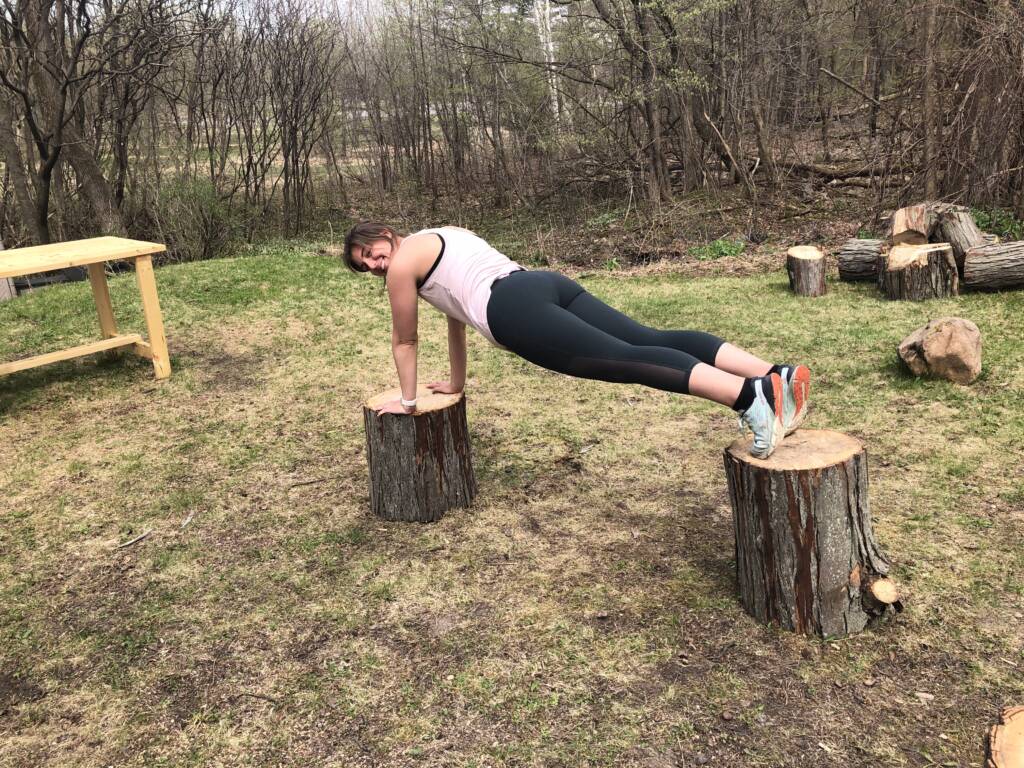Bodyweight movement doesn’t get the credit it truly deserves. Too often, it’s dismissed as too easy or only for beginners, simply because it doesn’t involve lifting heavy weights or using fancy equipment. Many people wrongly assume that if you’re not dripping sweat under a barbell, you’re not making real progress. But this couldn’t be further from the truth. Bodyweight movement challenges your strength, stability, mobility, and endurance in ways that traditional weightlifting sometimes can’t. These exercises are incredibly versatile — you can do them anywhere, skip the gear, and tweak them to fit how you feel that day.
Whenever I get bored or burned out with my usual strength training routine, I switch things up by doing a workout made entirely of bodyweight exercises. It only takes a day or two of being sore in places I didn’t know existed to remind me of how beneficial these exercises can be.
Benefits of Bodyweight Movement
Versatility
My favorite thing about body weight workouts is their versatility. Since the only ‘equipment’ you need is your body, they can be done anytime, anywhere.
A few years ago, I spent part of the summer working as a nurse at a summer camp. Not having access to a gym initially caused me a lot of anxiety. I previously had a very scheduled and regimented routine. I worried that stepping away from my familiar weight lifting workouts would undo all the progress I had worked so hard to build.. During this time, I had no choice but to pivot to solely bodyweight movement.
Not only did I experience the multitude of benefits from bodyweight movement, but this taught me that fitness doesn’t always have to be rigid or revolve around equipment. It can be flexible, creative, and just as effective.
Mobility
One of my favorite things about Summit Strength and Fitness is the absence of ego lifting. Summit places a strong emphasis on mobility and functional strength training. Strength training becomes significantly more effective (and safer) when it’s paired with regular mobility work. Building muscle and increasing strength is important, but without adequate range of motion and joint health, your gains may be limited and even lead to issues over time.
Take the shoulder press, for example. You might be able to press 80 pounds overhead with ease and have impressively developed deltoids. But if you lack the shoulder mobility to lift your arms fully overhead without compensation, that strength won’t translate well to everyday activities. If your shoulders can only reach a 45-degree angle before you start to arch your back or shift your form, you’re not just limiting your movement, you’re also putting yourself at risk of injury. In daily life, functional movement matters more than the amount of weight you can lift.
This is why bodyweight movements can really be helpful. Because they rely on your own body’s control and positioning, they naturally promote better movement mechanics and joint awareness. Many types of bodyweight movement take your joints through full ranges of motion. This helps to improve mobility while simultaneously strengthening the muscles that support the range of motion. Squats, lunges, inchworms and bear crawls are all exercises that not only build strength but challenge balance, coordination and flexibility as well. Incorporating these kinds of movements into your routine leads to better body control inside and outside the gym.

Functional strength
Everyone has different goals, but my main motivator for regular, consistent workouts is longevity of a healthy body. I want to be able to get in and out of a chair with ease when I am 80 years old. Or not have to worry about falling on a flight of stairs. All of these day to day actions are based on functional movements that can be strengthened during a workout. Squatting, lunging, hinging, reaching and stability are all examples of movements we work on in the gym, but translate to functional strength in everyday life.
Over the weekend, I realized just how important functional strength is. I was camping and didn’t have access to a toilet. So every few hours, I found myself doing a wall sit against a tree while peeing in the woods. Every time I went to the bathroom, I was grateful for the times I incorporated a wall sit into a workout, because now I can be in that position for minutes at a time with minimal discomfort. Functional strength for the win!
Debunking Bodyweight Movement Myths
“You can’t build muscle without weights”
In a previous post, I explained the physiology behind how muscle is built. In that post, I discussed that resistance, whether from weights, bands, or your own body, is just one part. I also discussed time under tension as a method of gaining strength and increasing muscle mass. To recap, time under tension refers to the amount of time your muscles are actively working during a set. What matters isn’t just how heavy the weight is, but how long you keep your muscles working under tension.
Adding a hold at the bottom of a squat or increasing how long you are in a plank increases the length of time during which your muscles are under strain. You don’t need heavier weights to make these modifications. When done intentionally and progressively, bodyweight movements can be incredibly effective at building muscle and improving overall performance.
“Bodyweight Movement is Too Easy”
If bodyweight movement feels too easy, it’s time to level up. This may require getting creative and changing the way you think about a certain movement. A squat is a great example of a movement that may feel easy, but can quickly become a challenge to conquer. I currently have the goal of mastering a pistol squat. A variation of a squat, but with the added challenge of increased depth and only squatting with one leg. Once a pistol squat becomes easy, I level up my goal to a dragon squat. The opportunities are truly endless!
Feel stuck or bored with your strength training routine? Try adding some bodyweight movements next time! These movements are easily transferable into other areas of life and fitness. Plus, it always helps to stay ready for the unexpected — you never know when you might have to pee in the woods.


